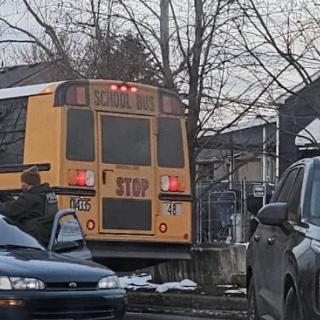Advertisement
Just how serious has the problem of heroin addiction become for Columbus and its suburbs?
Before a recent 60 Minutes story that exposed the local epidemic nationally, there were reports that Central Ohio rehabilitation centers were maxed out and putting abusers on waiting lists. But when The Columbus Dispatch editorial board called for a clean needle exchange program this past summer, it was truly eye opening. A double-take moment for many considering the paper has often promoted itself as a local mainstay of moral and conservative excellence.
Pressure from the Dispatch is apparently working. Mayor Michael Coleman announced in November the city with $280,000 in initial funding will begin a needle exchange program scheduled to start in January. Called “Safe Point,” the exchange will be administered by the AIDS Resource Center Ohio in the Short North.
The Dispatch’s urgency for serious action against heroin is, in part, because heroin is no longer just a problem of the poor and urban, but the rich and suburban, as well. Telling is a recent Dispatchstory about a family from Upper Arlington so desperate to help their heroin-addled son they sent him to $55,000-a-year rehabilitation school.
Sadly, it may have taken the addictions of younger people of privilege to finally get the attention of local and state leaders to do something other than jamming (mostly poor and marginalized) addicts into prisons.
For instance, Gov. John Kasich in 2011 created the Governor’s Cabinet Opiate Action Team, which seeks treatment and education over enforcement. Before this, and within weeks of taking office, the governor issued an executive order to expand FDA-approved medication-assisted treatment therapies. Several preventive initiatives were subsequently created such as Start Talking!, which encourages parents to regularly have conversations with their kids about drug abuse.
“There’s a lot going on,” says Eric Wandersleben, spokesperson for the Ohio Department of Mental Health and Addiction Services. “The Kasich administration has made fighting opiate addiction a key priority from day one.”
No doubt both state and local governments, along with private community-based healthcare providers, have mobilized against the heroin epidemic blamed for 1,177 overdose deaths in the state last year, this number according to the Ohio Department of Health.
But are they – and everyone else for that matter – doing enough for all heroin addicts whether rich or poor?
Medication-assisted treatment has become the most successful strategy in combating heroin addiction. Heroin’s grip is simply too strong for counseling alone.
There are three medicines helping addicts off heroin. There’s methadone and buprenorphine, which are classified as agonists, and work by mimicking opiates by taking away cravings and withdrawl. But while these drugs have been utilized as the standard care for years, one negative is many patients feel they have replaced one narcotic for another.
The third heroin addiction antidote is relatively new. It’s naltrexone and marketed under the name Vivitrol, which is a monthly injection of extended-release naltrexone. Classified instead as an antagonist, naltrexone blocks the effects of opiates by occupying the opiate receptor in the brain.
The Columbus Free Press spoke to several former heroin abusers in the midst of rehabilitation and they said Vivitrol works for roughly half of those who take it. Vivitrol does not take away cravings, they said, but you can’t get high on heroin, either.
One thing they all agreed on is that Vivitrol, manufactured by the Ireland-based Big Pharma corporation Alkermes, is too expensive for many. At an estimated $1,000 per shot a month, they said if it wasn’t for Medicaid or being court-ordered to take Vivitrol, they wouldn’t be able to afford it. Not surprisingly Alkermes stock price has soared since 2010 when it was at 10.94 and currently hovering around 75.
Locally on the front lines is Maryhaven, a private and publicly funded non-profit addiction treatment center administering Vivitrol. Maryhaven does not turn anyone away because of their inability to pay, but utilizes a sliding fee schedule if the patient can afford to pay, says Maryhaven President and CEO Paul Coleman.
“We have a success rate with Vivitrol that is slightly higher than the success we have with some of our other medicines, and that has to do with the fact that the patients who come to us for Vivitrol are always highly more motivated,” says Coleman, adding extensive counseling always accompanies any medication-assisted treatment. “They have to want to quit and quit now, and when that happens we administer Vivitrol.”
However, like many private addiction treatment centers that are also partially funded with public money, there are limited treatment slots for drug abusers at Maryhaven, says Coleman.
Waiting lists to get clean for heroin is a sign-of-the times for Central Ohio. More signs are just outside Maryhaven on Alum Creek Drive where a billboard has advertised for Vivitrol. There have been full page adds advertising for Vivitrol in the Dispatch, as well.
Clearly Vivitrol works for some – but how would one ever know if they or their family had no means to pay for it?
So it was disheartening in 2012 when Kasich vetoed a $1 million Vivitrol pilot program that would have been used, in part, to help released inmates in heroin addiction hot spots such as Franklin County. After the veto Maryhaven applied for a federal grant to continue administering Vivitrol, which they were awarded.
Kasich’s veto raises questions whether he and his administration truly wanted to fight “opiate addiction…from day one,” as Wandersleben of the Ohio Department of Mental Health and Addiction Services told the Free Press.
When asked about this, Wandersleben says Kasich vetoed the pilot program because it was for Vivitrol only.
“I want to make very clear that Ohio Department of Mental Health and Addiction Services and the Kasich administration support all forms of medication-assisted treatment,” says Wandersleben. “After working with members of the Ohio Legislature, we later supported the Addiction Treatment Pilot Program – and later, its expansion, which is now operational in 15 county specialty docket programs.”
Nevertheless, if Kasich would have approved the $1 million Vivitrol pilot program, one has to wonder how many heroin addicts the program would have helped, whether rich or poor.



